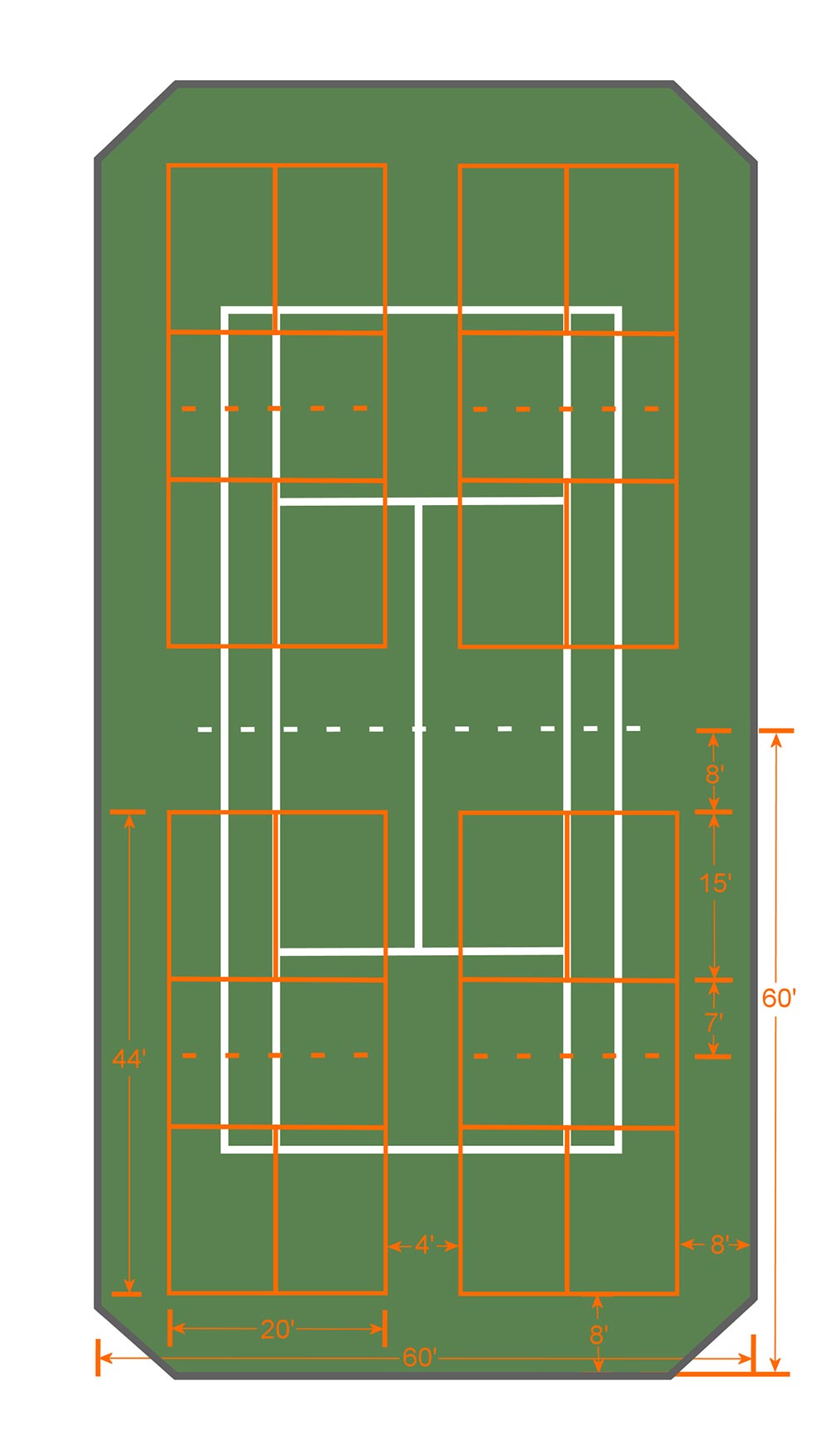Exploring the Different Kinds Of Pickleball Courts: Indoor, Outdoor, and Specialized Surfaces
The landscape of pickleball courts is varied, incorporating indoor, outside, and specialized surface areas, each offering unique features that can considerably affect gamer experience and efficiency. Indoor courts offer climate-controlled settings, while exterior options invite all-natural components that can enhance social interaction. Furthermore, specialized surfaces cater to varying player needs, from cushioning for joint health to enhanced grip for competitive play. Understanding these distinctions is important for players, instructors, and center managers alike, as it affects not only performance yet additionally the total satisfaction of the video game. What aspects should one consider when picking the suitable court for their needs?
Indoor Pickleball Courts
Although exterior pickleball courts are prominent, indoor pickleball courts supply a controlled environment that improves gameplay no matter weather. These courts are generally housed in centers such as fitness centers, recreation center, and devoted sporting activities complicateds, providing gamers with a consistent playing surface area without the changability of rain, wind, or severe temperatures.

One more substantial advantage of indoor pickleball courts is the accessibility they offer year-round. Players can participate in the sporting activity without issue for seasonal changes, making it an appealing alternative for league play and events. Additionally, numerous interior facilities provide facilities such as locker spaces, rest areas, and social spaces, cultivating a feeling of area amongst gamers. Overall, indoor pickleball courts play an important role in promoting the sport and accommodating its growing appeal.
Outside Pickleball Judiciaries
Outside pickleball courts supply a special having fun experience that connects gamers with nature while supplying a possibility for social interaction and area engagement. These courts are normally created in parks, leisure areas, and area centers, making them easily accessible to a wide audience.
The design of outdoor courts mirrors that of indoor centers, including a rectangular having fun surface area determining 20 feet wide by 44 feet long for doubles matches. The open-air setting boosts the playing experience, enabling gamers to appreciate fresh air and natural light. Nonetheless, exterior courts also present difficulties such as varying climate condition, which can influence gameplay. Wind, sun glow, and temperature level variations can influence shot precision and player endurance.
Additionally, outdoor courts often foster a sense of area, as they are often made use of for neighborhood competitions, centers, and casual play. This common facet urges players of all ability levels to involve with each other, promoting both competitive spirit and camaraderie.
Specialized Pickleball Court Surfaces

Common materials used for specialized pickleball courts include acrylic and supported surface areas, which supply a balance of suppleness and convenience. Polymer surface areas, frequently used in outside setups, sites provide exceptional weather condition resistance and can be repainted with dynamic colors for presence and looks. Cushioned surface areas, commonly located inside your home, provide extra shock absorption, decreasing the stress on gamers' joints during extreme play.
Furthermore, specialized surfaces can be customized to fit numerous ability degrees and player preferences. For circumstances, leisure players might benefit from softer surface areas that allow for longer rallies and much less exhaustion, while affordable players may choose stronger surfaces for faster round feedback and enhanced control.
Comparing Court Characteristics
When assessing pickleball courts, various features enter into play that can substantially impact the total experience for players. One of the primary variables is the surface area product, which can range from concrete to specific sports floor covering. Concrete surface areas have a tendency to investigate this site be resilient but may result in a more difficult bounce, while softer surfaces can offer better grasp and shock absorption, improving player comfort.
An additional essential quality is court measurements. Common pickleball courts measure 20 feet broad by 44 feet long for doubles play; however, certain facilities may adjust these dimensions based upon readily available room or gamer choices. Additionally, the height of bordering walls or obstacles can affect gameplay, specifically in indoor settings where ball rebound is an aspect.
Illumination is likewise vital, specifically in indoor courts where exposure can diminish efficiency. Outside courts have to think about environmental variables such as wind and sunlight, necessitating strategic placement and potentially the usage of windbreaks or shade frameworks.
Selecting the Right Court
Picking the right pickleball court involves careful factor to consider of various aspects that straight affect gamer experience and efficiency. One of the key considerations is the court surface. Indoor courts generally feature hardwood or synthetic materials that supply consistent bounce and grip, while outdoor courts might use asphalt or concrete, which can affect sphere rate and player movement.
Environmental problems likewise play an essential function. Outdoor courts undergo wind, sunlight, and varying temperature levels, every one of which can affect gameplay. Conversely, indoor courts use a controlled environment, enabling year-round play without the disturbance of weather.
Area is another essential aspect; access can identify just how typically players can take part in the sporting activity. Proximity to home or job, along with the availability of facilities such as lighting and seating, can enhance the overall experience.
Finally, the degree of competition and community atmosphere need to not be forgotten. Selecting a court that lines additional resources up with one's ability degree and social preferences can significantly boost pleasure and inspiration. By meticulously considering these components, players can make an informed choice that optimizes their pickleball experience.
Final Thought
Interior courts supply controlled problems that improve play, while outdoor courts give a special atmosphere that promotes community communication regardless of prospective weather condition challenges. Ultimately, choosing the suitable court kind is vital for maximizing enjoyment and skill growth in pickleball, guaranteeing players can totally involve with the sporting activity in their recommended setup.